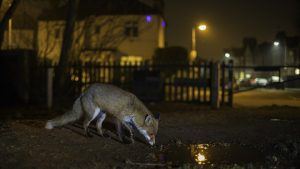Michelle Nijhuis in The Atlantic:
 In 2011, the wildlife biologist Justin Brashares and his students set up a series of camera traps in and around Ruaha National Park in southern Tanzania. They were studying the effects of human activities on antelope reproduction, but their cameras soon revealed an odd and far more obvious pattern. While the antelope inside the park were active during the day, those outside the park, closer to human settlements, were active primarily at night—even though lions, which prey on antelope both inside and outside the park, typically hunt at night. The contrast in behavior was so stark that when Brashares and one of his students looked at a plot of the data, they laughed in disbelief. When faced with a choice between humans and lions, it appeared, antelope preferred to tangle with lions, and they were going nocturnal to do so.
In 2011, the wildlife biologist Justin Brashares and his students set up a series of camera traps in and around Ruaha National Park in southern Tanzania. They were studying the effects of human activities on antelope reproduction, but their cameras soon revealed an odd and far more obvious pattern. While the antelope inside the park were active during the day, those outside the park, closer to human settlements, were active primarily at night—even though lions, which prey on antelope both inside and outside the park, typically hunt at night. The contrast in behavior was so stark that when Brashares and one of his students looked at a plot of the data, they laughed in disbelief. When faced with a choice between humans and lions, it appeared, antelope preferred to tangle with lions, and they were going nocturnal to do so.
More here.
